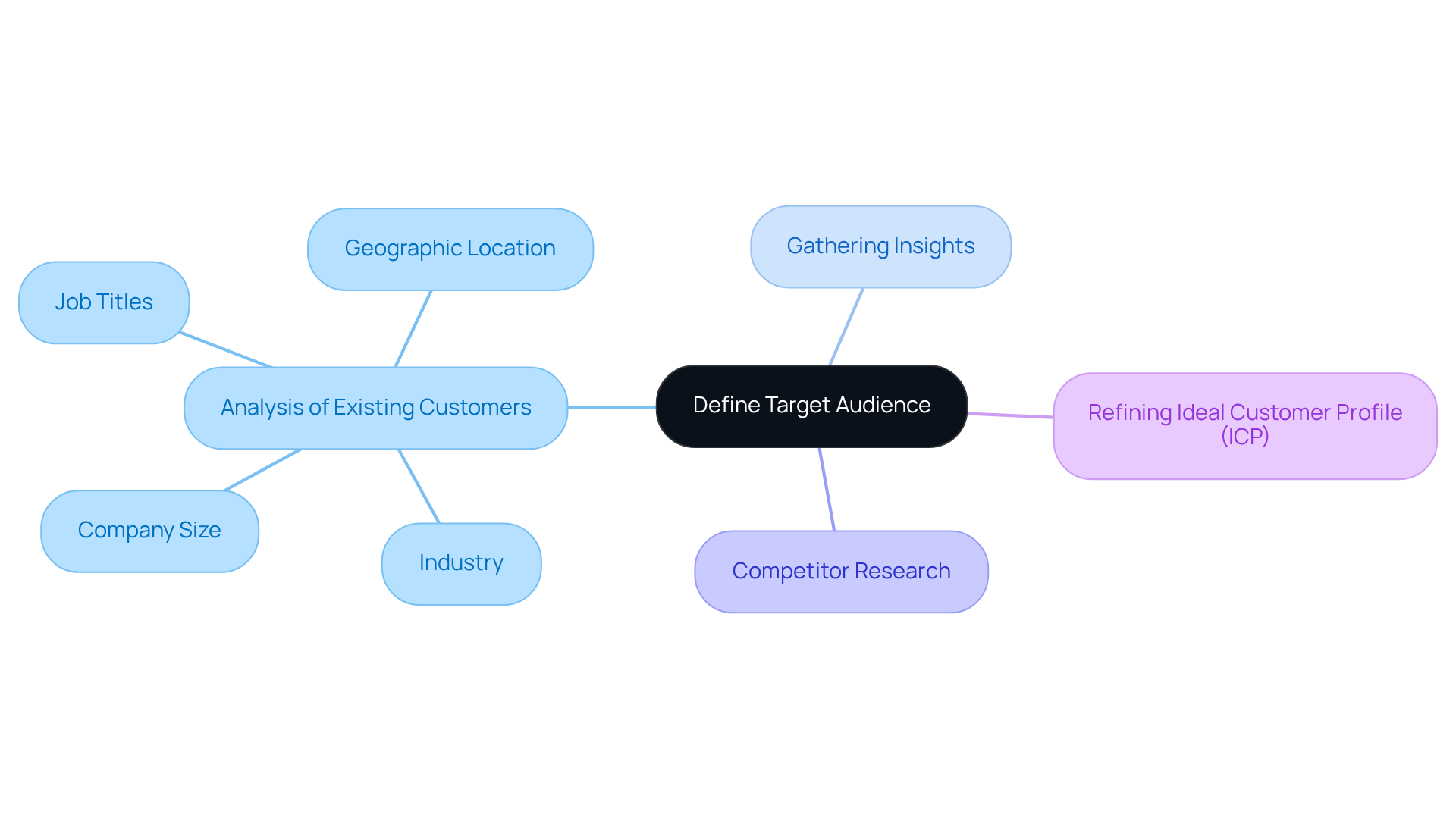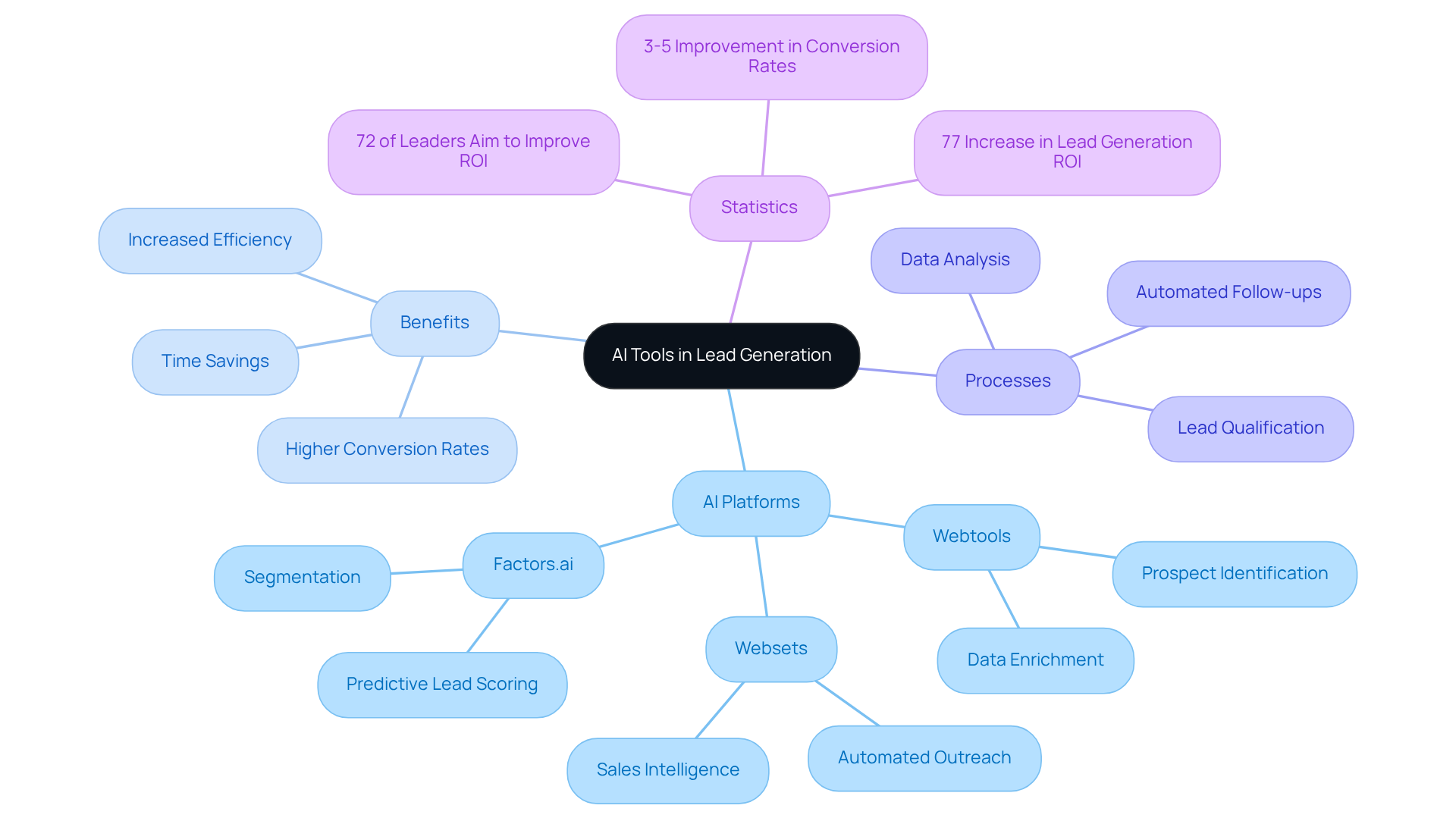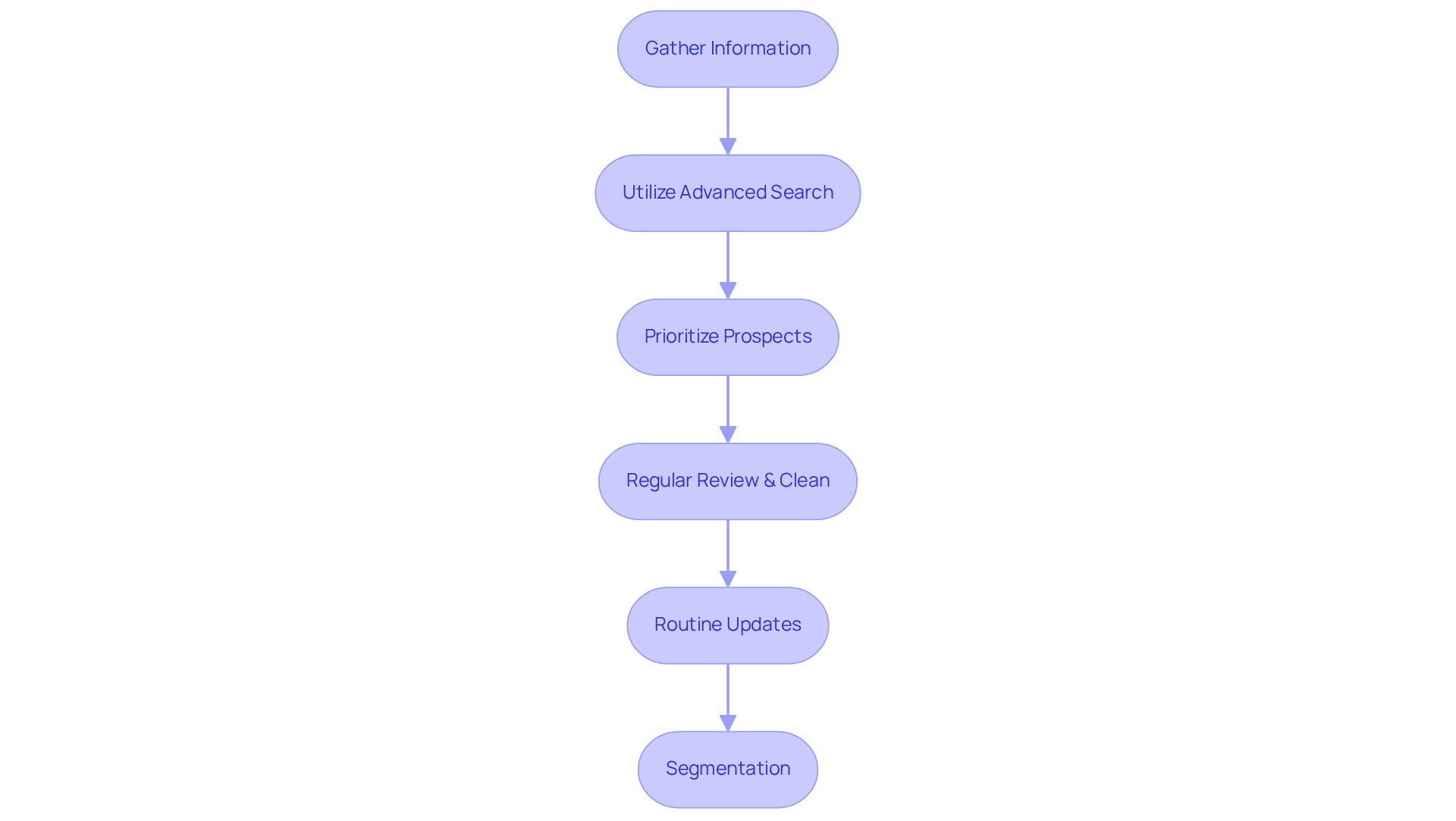Overview
This article delineates best practices for crafting effective prospecting lists, pivotal for elevating sales success. It underscores the necessity of defining a target audience through meticulous data analysis and customer insights. By leveraging AI tools, businesses can achieve efficient lead generation. Additionally, maintaining updated prospect lists is essential to ensure relevance and engagement. Collectively, these strategies are crucial for enhancing conversion rates and overall sales performance.
Introduction
In today's competitive landscape of sales prospecting, defining and refining a target audience is more crucial than ever. Leveraging best practices alongside advanced AI tools enables sales teams to create effective prospecting lists that not only streamline outreach but also significantly enhance conversion rates. Yet, a pressing challenge persists: how can organizations effectively utilize data and technology to identify and engage the right prospects in a rapidly evolving market? This article delves into essential strategies for mastering prospecting lists, ensuring sales success in 2025 and beyond.
Define Your Target Audience for Effective Prospecting
To effectively define your , start by . Identify shared characteristics such as industry, company size, job titles, and geographic location. Utilize tools like surveys and interviews to gather from your customers—these can reveal valuable patterns. Furthermore, researching competitors provides context on their and strategies. For instance, if your analysis shows that a significant portion of your successful clients are mid-sized tech companies located in the Northeast, focus your prospecting lists on similar organizations in that region.
It is crucial to regularly revisit and (ICP) based on evolving market trends and . This ensures that your profile remains relevant and effective. As emphasized by marketing professionals, comprehending your ideal clients and their requirements is essential for . This understanding, combined with and recruiting capabilities, enables more targeted engagement and the identification of .

Leverage AI Tools to Enhance Lead Generation Efforts
Incorporating significantly enhances both efficiency and effectiveness. Platforms like Webtools empower users to navigate extensive datasets, pinpointing potential prospects that align with your ideal customer profile (ICP). By leveraging sophisticated AI algorithms, the platform analyzes vast amounts of information to identify which prospects are most likely to convert. This enables sales teams to concentrate their outreach efforts strategically.
For instance, Websets' automates , delivering valuable insights into prospects' LinkedIn profiles, company details, and work histories. This not only streamlines the but also elevates the quality of your prospecting lists. Furthermore, employing AI chatbots for initial interactions qualifies potential clients based on established criteria, ensuring that only the most promising candidates are passed on to your marketing team. This approach saves time and , solidifying AI as an indispensable resource in contemporary marketing strategies.
Websets also offers , revolutionizing your go-to-market strategy with AI-driven . This capability allows you to uncover businesses and individuals that meet hyper-specific criteria, enriching your data with essential details. According to a recent report, 72% of leaders aim to enhance ROI through AI investments. Notably, a Fortune 100 financial services organization realized a 3%-5% improvement in target conversion rates by increasing segmentation and personalization. As Jay emphasizes, "The best organizations are using AI to eliminate the tedious parts of prospecting while elevating their people to focus on strategy, relationship building, and complex negotiations." Integrating these insights and statistics underscores the .

Implement Best Practices for Building and Maintaining Prospecting Lists
To create an effective prospecting list, start by such as CRM systems, social media, and industry databases. By utilizing Exa's advanced search features, you enhance your information retrieval process, allowing for more precise identification of potential prospects. Prioritize these prospects based on their alignment with your (ICP) and their level of engagement. Regularly review and clean your prospecting lists to while incorporating new leads, for seamless .
Establish a routine for —ideally every 30 to 45 days—to ensure their accuracy. Use according to criteria like industry, company size, or engagement level, facilitating more personalized outreach. For instance, if certain segments demonstrate a higher response rate to specific messaging, to fit those insights. This proactive strategy, supported by , guarantees that your is consistently equipped with the most relevant information, ultimately driving improved results.

Conclusion
An effective prospecting strategy is crucial for achieving sales success, with a deep understanding of your target audience at its core. By analyzing existing customers, utilizing AI tools, and adhering to best practices for managing prospecting lists, sales teams can significantly enhance their outreach efforts and drive superior results.
Key insights underscore the necessity of regularly refining your Ideal Customer Profile (ICP) in response to market trends and customer feedback. AI-driven platforms not only streamline the prospecting process but also markedly improve lead quality. Moreover, establishing a routine for updating and segmenting prospecting lists ensures that sales teams are equipped with the most relevant and actionable information.
In an intensely competitive landscape, adopting these best practices for sales prospecting can yield substantial benefits. By embracing AI tools and maintaining dynamic prospecting lists, sales professionals can concentrate on building relationships and developing personalized outreach strategies. As the market continues to evolve, remaining proactive and well-informed will be essential for achieving sustained success in sales prospecting.
Frequently Asked Questions
How can I define my target audience for effective prospecting?
Start by analyzing your existing customer base to identify shared characteristics such as industry, company size, job titles, and geographic location. Use tools like surveys and interviews to gather insights directly from your customers, which can reveal valuable patterns.
Why is it important to research competitors when defining a target audience?
Researching competitors provides context on their target demographics and strategies, helping you understand the market landscape and refine your own target audience.
What should I do if I find a significant portion of my successful clients share similar traits?
If you identify shared traits among successful clients, focus your prospecting lists on similar organizations that match those characteristics, such as industry and location.
How often should I revisit my Ideal Customer Profile (ICP)?
It is crucial to regularly revisit and refine your Ideal Customer Profile based on evolving market trends and customer feedback to ensure it remains relevant and effective.
Why is understanding my ideal clients important for prospecting?
Comprehending your ideal clients and their requirements is essential for creating effective prospecting lists, which leads to more targeted engagement and the identification of qualified candidates.
How can AI-driven tools assist in defining a target audience?
AI-driven sales intelligence search and recruiting capabilities enable more targeted engagement and help identify qualified candidates, enhancing the effectiveness of your prospecting efforts.




